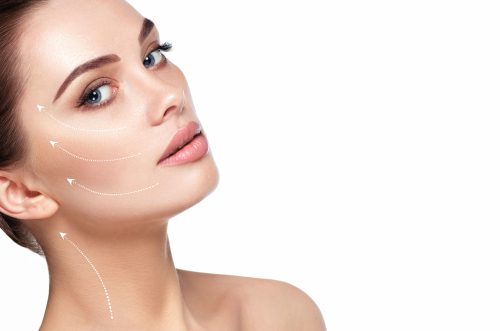What Procedures Should I Combine with My Facelift?
Posted July 01, 2019 in Facelift
Facelift surgery is performed to rejuvenate the face and restore youthfulness. While there is no other procedure that can match the results of a facelift, even this surgery has its limitations.
Facelift surgery addresses the bottom two-thirds of the face. It removes excess skin that has begun to sag due to the loss of collagen, elastin, and hyaluronic acid, tightens the underlying muscles that have started to droop and create jowls, and it can restore the appearance of full and round cheeks by returning tissues to their correct place.
Unfortunately, facelift surgery does not address aging on the upper portion of the face and cannot correct tone or texture irregularities on the skin. Combination procedures must be performed to accomplish this.

Blepharoplasty
The eye area undergoes a significant amount of stress every day without you knowing it. Every time you blink or change your facial expression, the skin around your eyes stretches and weakens. Because of this, your eyes are the first facial features to show visible aging. When a facelift is performed without addressing the eyes, you run the risk of an imbalance between the appearance of your eyes and the lower part of your face. Blepharoplasty, or eyelid surgery, is a common and often necessary addition to a facelift. This surgery can reduce the appearance of upper eyelid hooding by trimming excess skin and repositioning fat pockets. It can also remove bags and dark circles under the eyes by redistributing fat and tightening skin. Combining this with a facelift will not only ensure that the upper third of the face remains in balance with the lower two-thirds, but it will open up your eyes and can even improve your range of vision.
Dermal Fillers
Dermal fillers are injectable treatments that restore facial volume. These can be used to plump areas of the face, such as the cheeks or lips, or used to fill in wrinkles and creases, such as nasolabial folds, marionette lines, or smoker’s lines. Dermal filler treatments can be performed before facelift surgery or can be useful as a follow-up to ensure that the results of your facelift are long-lasting. Facelift surgery does not stop the natural progression of aging, but non-invasive treatments like fillers can help keep your face looking youthful. JUVÉDERM® and Restylane® are hyaluronic acid fillers that stimulate collagen production and attract moisture, SCULPTRA® Aesthetic is a poly-L-lactic acid filler that restores long-lasting volume to the lower face, and Revanesse® Versa™ is a soft tissue filler that smooths fine lines and wrinkles.
Neuromodulators
Neither facelift surgery nor blepharoplasty targets aging on the forehead or in between the brows. Injectable treatments like BOTOX® Cosmetic and Dysport® do. These are neuromodulators, meaning that they block the chemical signals from reaching the nerves that allow facial muscles to contract and form wrinkles. Using BOTOX® Cosmetic or Dysport® periodically, along with a facelift, allows your entire facial contour to appear smooth and youthful.
Laser Resurfacing
Facelift surgery tightens skin and tissues so that they will appear smoother and younger. It cannot address the quality of your skin. Facelift surgery can do nothing for hyperpigmentation, acne scars, dark spots, or tone and texture irregularities. Following up your facelift with a laser resurfacing treatment will allow your newly tightened skin to appear brighter and more refreshed. Careaga Plastic Surgery offers CO2 laser treatments to address skin imperfections.
Contact Us Today!
For more information about facelift surgery or any of the combination procedures available, contact Careaga Plastic Surgery by calling (305) 960-7511 or by filling out our online contact form.
